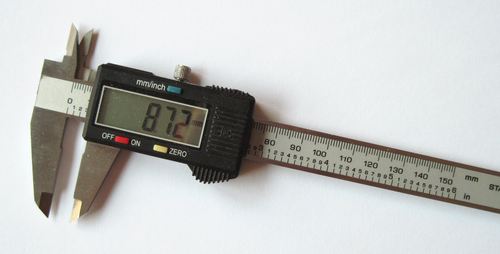How to Utilize Your Digital Calipers
To get the right measurements, digital calipers necessary to learn how to use legally. Digital calipers are your closest companion with regards to making actual measurements of little questions. For digital creation work, they're out and out fundamental for guaranteeing that your element dimensions in programming are reliable with the material's actual dimensions.

This guide shows how to utilize digital calipers to take different measurements and is helpful for anybody needing to figure out how to use them appropriately.
Why utilize calipers instead of a ruler?
In a word, exactness. The ruler and your eyeball may be fine for some situations but not with regards to ensuring your device mills at a profundity of 0.003″ and not 0.006″ or 0.001″.
Why utilize digital calipers instead of dial calipers?
It's substantially simpler to peruse digital calipers, and they're frequently no more costly or less exact than dial calipers. Unless you're extremely old-school or you simply cherish dials, a digital caliper is an approach.
Zero the Calipers previously taking Measurements
It's basic to zero your calipers previously getting any measurements. If you skirt this progression, your resulting measures may not be perfect. In the activity over, the show peruses - 0.0025″ during the jaws are first shut. The zero button is then squeezed to fix it to zero.
Whenever it's shut, it peruses 0.000″, so it's prepared to get measurements. Some fancy calipers, similar to these, ensure that the zero location will dependably be right, but it's as yet essential to ensure.
Estimating Outside Dimensions
Utilize the outer jaws to measure the outer dimensions of a question. Ensure that the protest is equal to the jaws, or else the measurement won't be accurate. In the liveliness over, the outer jaws are being utilized to estimate the width of a bit of processed aluminum. The second movement is wrong because the question being measured isn't parallel to the jaws.
Estimating Inside Dimensions
Utilize within jaws to measure within dimensions of a protest. Ensure the question is opposite to the jaws. During the liveliness over, within jaws are being utilized to measure within dimensions of a hole processed into a bit of aluminum. The second liveliness is inaccurate but the question being measured isn't opposed to the jaws.
Estimating Profundity
Utilize the profundity check to measure the profundity starting with one surface then onto the next. Ensure the calipers are opposite to the area being measured. In the movements over, the profundity check is being utilized to measure the separation from the outside of an aluminum element to the work area beneath it. The second activity is erroneous because the calipers are not opposed to the outsides being measured.
Making a Stride Measurement
Utilize the progression check to measure the separation of one edge and the following edge over it. In the movement over, the progression check is being utilized to measure the separation from the edge of a processed part to the leading edge of the square component above it.
Taking Comparative Measurements
By zeroing the calipers set up when using a measurement, you can contrast the dimensions of one protest with those of different. In the liveliness over, the diameter of space in a processed part is contrasted with the width of a rod to decide whether the rod will fit in the hole.
To begin with, within jaws are utilized to measure the diameter of the hole. Next, the zero button is squeezed to zero the calipers. At long last, the outside jaws are utilized to measure the outer dimensions of the rod. The perusing on the screen is the opposition between the dimensions of the hole and the rod.